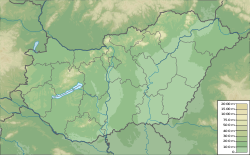| Mecsek Coal Formation | |
|---|---|
| Stratigraphic range: Hettangian-Pliensbachian ~ | |
| Type | Geological formation |
| Unit of | Tisza Unit |
| Underlies | Kecskehát Limestone |
| Lithology | |
| Primary | Siltstone |
| Other | Coal |
| Location | |
| Coordinates | 46°06′N18°12′E / 46.1°N 18.2°E |
| Approximate paleocoordinates | 27°36′N21°36′E / 27.6°N 21.6°E |
| Region | Baranya, Transdanubia |
| Country | Hungary |
| Type section | |
| Named for | Mecsek Mountains |
The Mecsek Coal Formation is a Jurassic geologic formation in Hungary. Indeterminate fossil ornithischian tracks have been reported from the formation. [1]
